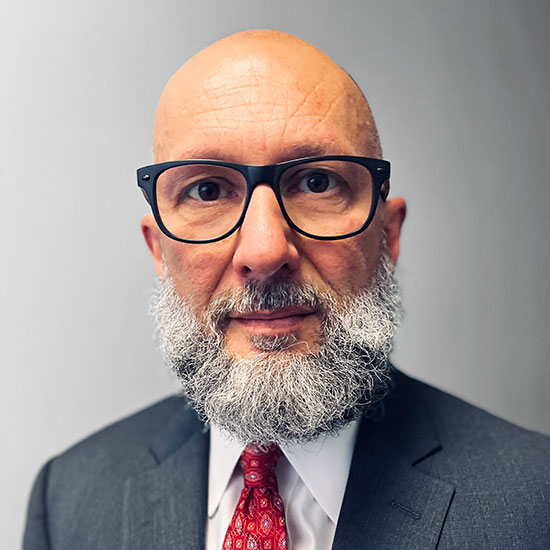Microcredentials as Catalysts for Change
Former Analyst

As I have stated elsewhere, I like to think of myself as something of a skeptic. The healthy skepticism I aim to practice is governed by years of academic training and research and informed by years of professional experience in higher education information technology. Skepticism avoids the pitfalls of black-and-white thinking that technology will either save or doom us by seeking evidence of impact and being patient enough to see how things pan out.
Digital badges and other microcredentials have been on our radar for some time. Having emerged from the gaming world, badges were initially conceived to reward and demonstrate competency beyond standardized exams, letter grades, and credit hours. Early links to the gamification of learning movement led many to question the purpose of, demand for, and efficacy of badging and to (mis)quote tongue-in-cheek the famous line from The Treasure of Sierra Madre in response to badging initiatives. Theoretical concerns and methodological issues related to extrinsic learning motivation, the reinforcement of academic hierarchies, and the validity of badges issued and earned were more pervasive and critical if the technology was to be taken seriously.
Roughly 10 years later, I think that the concerns about microcredentials have largely been addressed and that their utility to learners and employers is beginning to be fully realized. The Open Badges movement pioneered by Mozilla and the MacArthur foundations in 2010 and taken over by IMS Global in 2017 has successfully established industry standards for verifiable, stackable, and portable digital credentials. The metadata behind the digital achievement delineates who earned the badge, who issued it, and what it means in terms of the criteria met to earn it, the date it was earned, the expiration date (if any), and any other facts the issuer may decide to include. The standards have been widely adopted by vendors who seek Open Badges certification, learners who leverage badges earned strategically when seeking employment or promotions, and employers who need to verify skills, experiences, and competencies not typically represented on college transcripts.
However, higher education institutions remain slow to adopt microcredentials to empower and enhance students’ learning experiences. Institutions’ reluctance to incorporate microcredentials may have a lot to do with the latter’s threat to the traditional way of doing things in higher education. But the rise of microcredentialing does not necessarily pose an existential threat to higher education, nor does it require a wholesale revolution that undermines institutional missions to educate and serve students.
To better understand what the tradeoffs might be if higher education moved from a traditional model of awarding credentials to students (e.g., diplomas based on credit hours) to a modern one that embraces microcredentials as part of a comprehensive learner record (CLR), I used the “Ride Two Curves” futures exercise from the Institute for the Future (IFTF). In this exercise, I cataloged aspects of today’s way of doing things and today’s innovations and then imagined what a modern system might resemble. The results produced a set of recommendations for things we should leave behind, things we could leave behind, things that we can transform, and things of value we risk losing.
A couple of caveats before proceeding: 1) these are not fully formed policy proposals but are the product of a thought exercise to fundamentally rethink higher education considering a technological innovation; and 2) none of the things mentioned would be easily accomplished, especially in the face of an entrenched educational culture deeply vested in the continuation of these practices.
Things We Should Leave Behind
The things we should leave behind are so woven into the fabric of our educational system that it is difficult to imagine giving them up, but this needs to be seriously considered if we are to transform the student learning experience.
- Grading (and GPAs): Empirical evidence suggests that assigning grades to student work reduces students’ interest in learning, preferences for challenging tasks, and the quality of students’ thinking.
- Credit hours: The credit hour as a measure of in-class instruction is a poor metric of the amount of students’ time on task, especially in online and blended learning models or innovative course designs.
- Transcripts: Traditional paper-based transcripts owned by the institution do not accurately represent the sum total of student learning experiences and do not have the portability and flexibility of student-owned comprehensive learner records (CLRs).
Things We Could Leave Behind
The things we could leave behind include features of the higher education experience that continue to be desirable and hold value for many students but are neither necessary nor sufficient to meet the needs of many learners.
- Rectilinear, term-based learning. Four-year degrees, based on terms of varying lengths with designated breaks, provide students with a fixed starting and ending point of one’s academic career but constrain significantly when and where valuable learning experiences occur. Multitrack calendars, self-paced learning opportunities, and the ability to document learning that takes place in the breaks would benefit many learners.
- Course-based degrees: Courses are not the only learning experiences students have that could count towards a credential. Stanford’s concept of an Open Loop University in which knowledge can be acquired in the classroom and practical settings could serve as a model for reconceptualizing what counts as or toward a degree.
Things We Can Transform
Some things seem to be working reasonably well and may not require a complete overhaul but lend themselves to change should we be inclined.
- Courses: Empirically, we have the support to replace lectures with active learning, rethink the spaces in which they are delivered, and change delivery modes. If we can unmoor our notions of course from specific start and finish dates and embrace the concept of self-paced learning, what constitutes a college course could fundamentally change.
- Disciplines and majors:Interdisciplinary studies have been around for a long time, but they are often challenging to manage, staff, and support, given the constraints imposed by traditional disciplines to maintain subject matter and methodological control. Breaking down disciplinary siloes to address real-world problems and reconfiguring majors to reflect the interdisciplinary complexity of the world might be worth considering. Some institutions are already beginning to experiment with blurring the lines between the disciplines by leveraging new physical spaces to encourage interdisciplinary work.
Things We Risk Losing
The things we risk losing are already under siege from a host of exogenous political and economic pressures and institutional mismanagement of resources. Preserving these things can and should be a priority.
- The liberal arts: The concept of a comprehensive education geared toward educating individuals to be well-rounded citizens whose minds have been liberated to pursue whatever interests they choose is under constant threat from a narrow utility calculus. We know that employers value and desire students with a strong liberal arts background, but privileging STEM disciplines at the expense of the humanities and social sciences risks turning higher education institutions into glorified training facilities. The path to long-term institutional success does not include gutting history, sociology, and language departments, for example, but helping students communicate and demonstrate the value of a liberal arts credential.
- Unique educational experiences: The push toward standardizing and modularizing course content and curricula constrains academic freedom to teach courses how one sees fit and may limit the approaches, issues, and content covered in the courses themselves.
Microcredentials may not revolutionize higher education, but they are a digital innovation that invites us to begin conversations about what is to be gained and lost in the process of incorporating them. Each institution’s journey will be different depending on the timing and pace of adoption of digital credentials. But institutions that carefully consider ways in which microcredentials can be synthesized into their practices and approaches to education will benefit more than those who either ignore them entirely or treat them as an aftermarket add-on.
Categories
Share Article:

Other Posts From this Author:
© Copyright 2025, The Tambellini Group. All Rights Reserved.